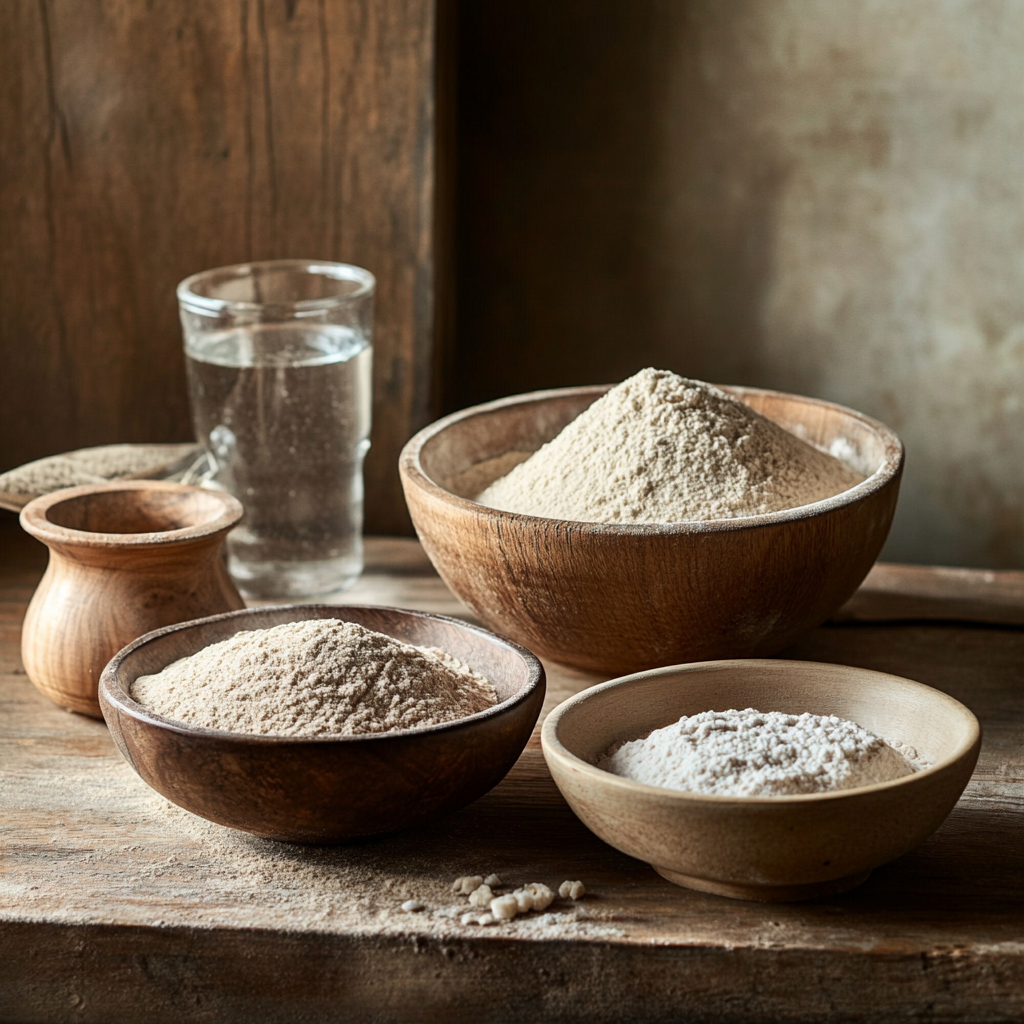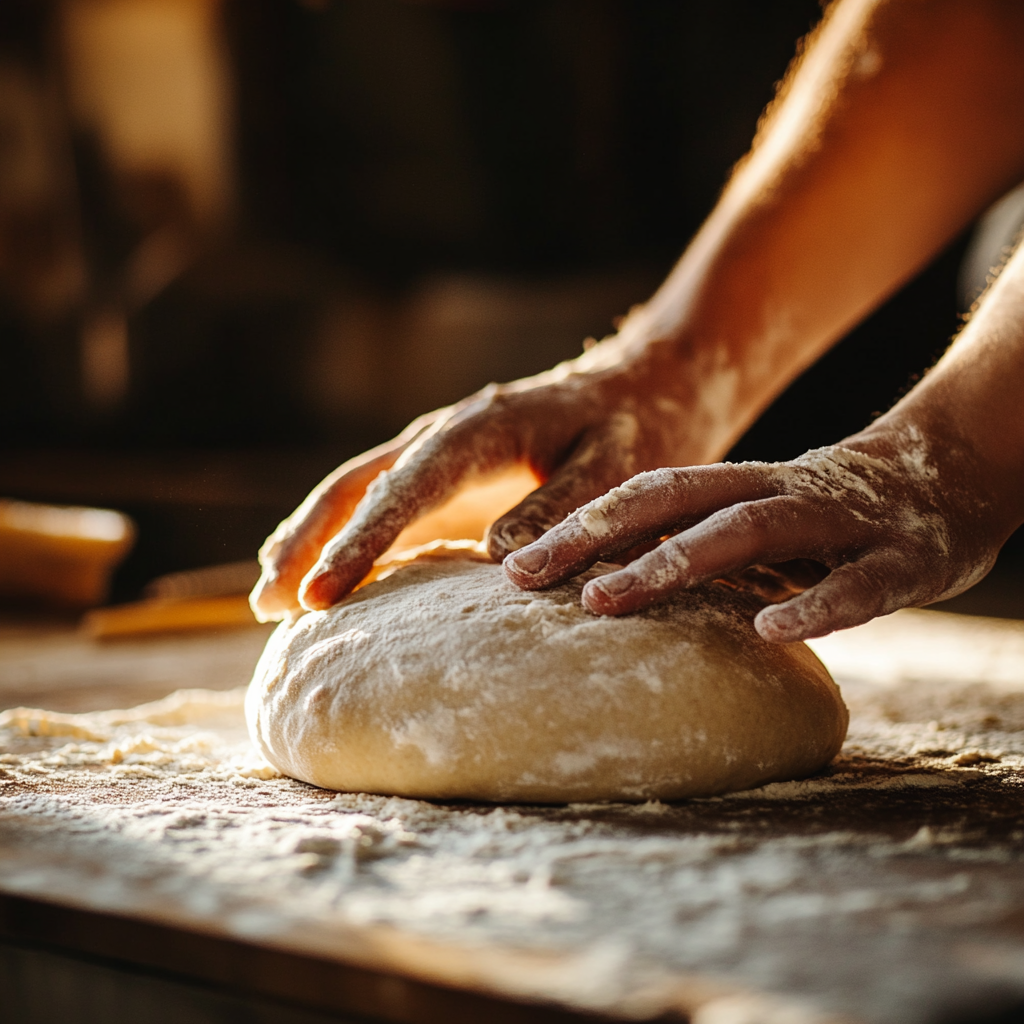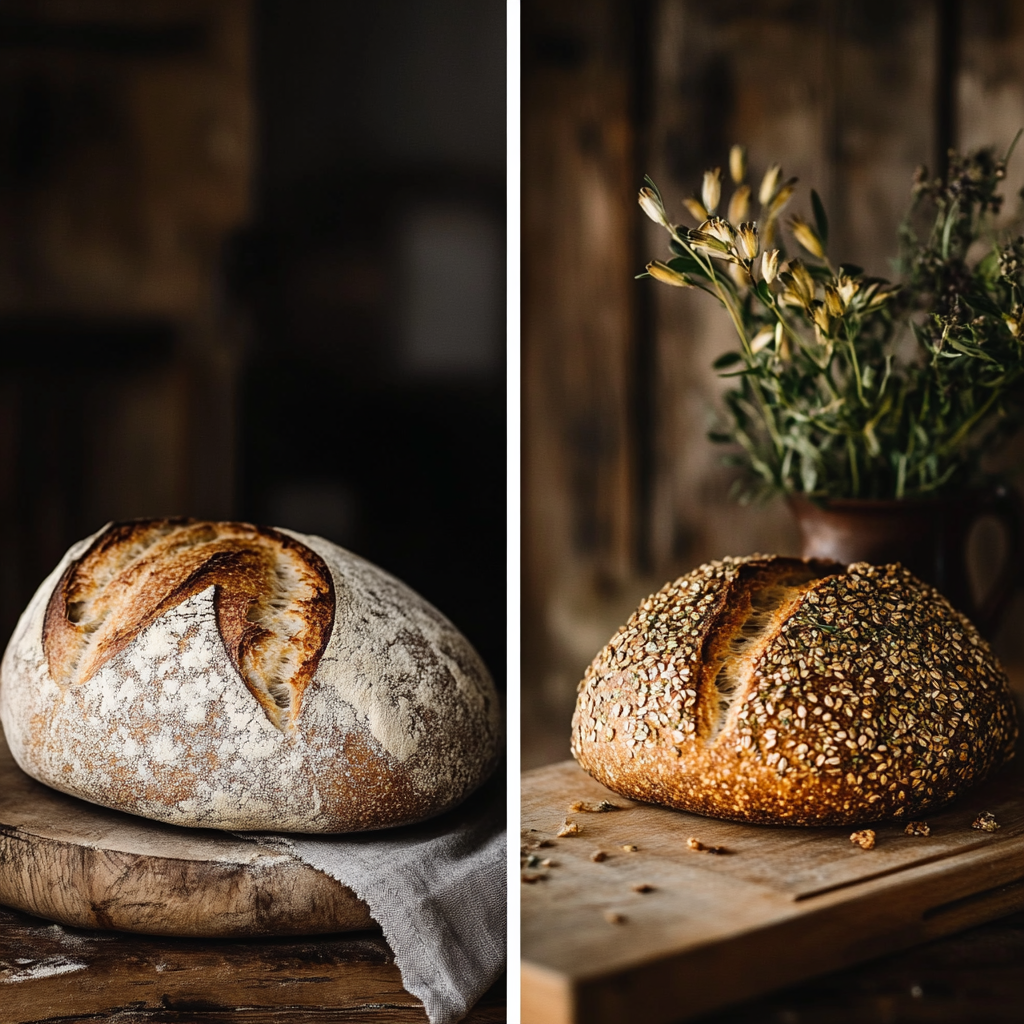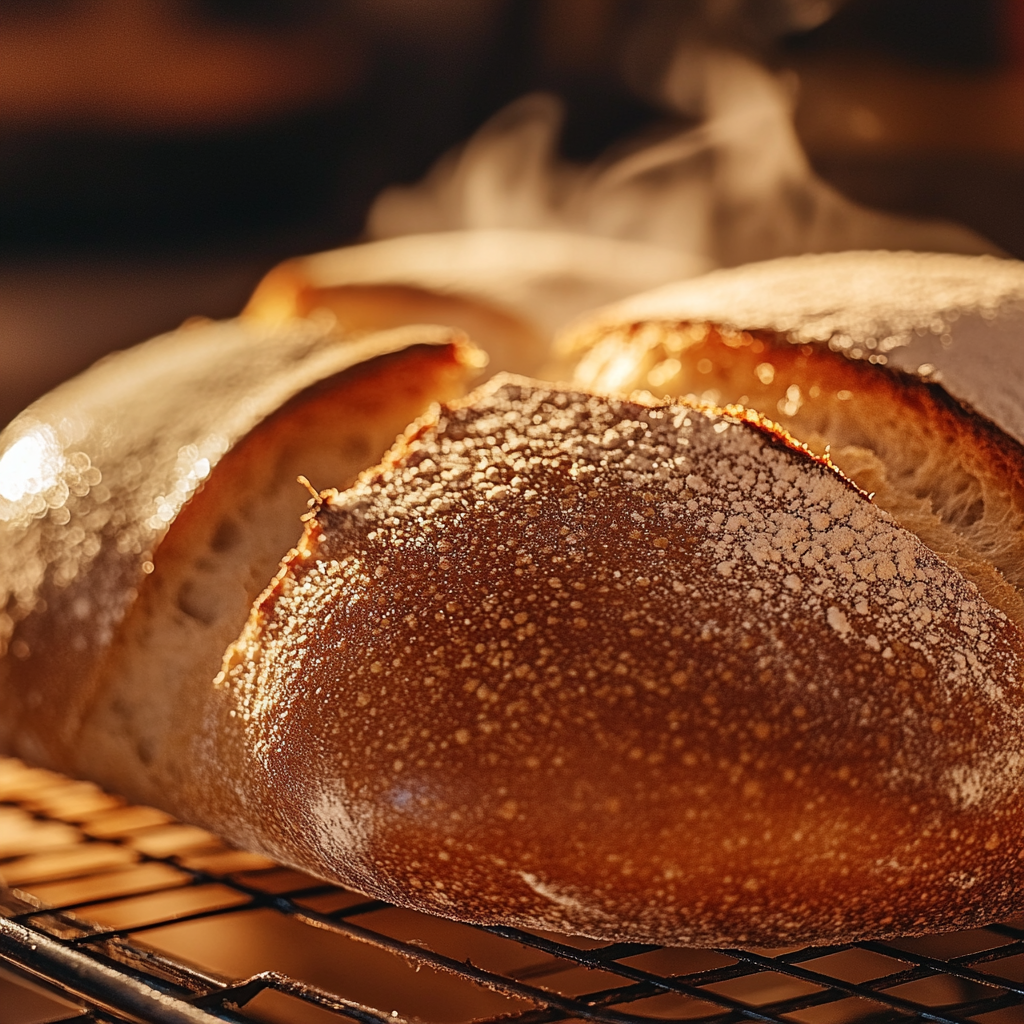Could I add semolina flour to white rye sourdouh recipe ?
When crafting a delicious, artisanal sourdough, most bakers strive to perfect that ideal balance between flavor, texture, and crumb. One popular combination is white rye sourdough, known for its earthy and tangy taste. But what if you could take your sourdough recipe to new heights by adding a special ingredient? Enter semolina flour, made from durum wheat, which can transform your white rye sourdough into something truly extraordinary.
But you might be wondering, “Can I add semolina flour to a white rye sourdough recipe?” Absolutely! Semolina flour offers a unique texture, a nutty flavor, and a beautiful golden hue to your sourdough. It not only enhances the taste but also improves the gluten structure, giving your loaf a firm yet chewy crumb.
This blog will walk you through the process of incorporating semolina into a traditional white rye sourdough, covering everything from the ingredients to expert baking tips. Whether you’re new to sourdough breads or a seasoned baker, this guide will equip you with the knowledge and confidence to experiment with these exciting flour combinations.
For more delicious ways to use this unique bread, check out our Breakfast section, which includes ideas to enjoy your fresh loaf.
Why Add Semolina Flour to White Rye Sourdough?
Understanding Semolina Flour
Semolina flour comes from durum wheat, a hard wheat variety often used for making pasta. However, semolina is also an excellent addition to bread dough due to its slightly coarse texture, nutty flavor, and high protein content. Semolina is especially popular for adding strength to the gluten structure of the dough, resulting in a loaf with a firm yet tender crumb and a satisfying chew.
Adding semolina flour to a white rye sourdough recipe creates an enhanced loaf that is as delicious as it is visually appealing. The semolina flour imparts a lovely golden hue, while the rye flour provides the tang and complexity sourdough lovers crave.
Key Benefits of Semolina in Sourdough
- Improved Texture: The coarse texture of semolina flour results in a heartier crumb with a perfect balance between chewy and firm.
- Nutty Flavor: Semolina brings a subtle sweetness and nuttiness that pairs wonderfully with the tangy flavor of rye and sourdough starter.
- Golden Crust: Semolina gives the crust a beautiful, golden-brown color when baked, making the loaf visually stunning.
- Enhanced Gluten Structure: Thanks to the high protein content of durum wheat, semolina helps strengthen the dough and improves its elasticity, making it easier to handle and shape.
Ready to experiment with semolina in your sourdough recipe? Let’s dive into the process. For more inspiring bread recipes, visit our Snacks section, which includes different flour combinations and innovative ideas.

Ingredients Overview: What You’ll Need for White Rye Sourdough with Semolina Flour
Crafting the perfect white rye sourdough with semolina flour begins with using high-quality ingredients. Here’s a breakdown of what you’ll need for this enhanced sourdough recipe.
Main Ingredients:
- Rye flour (300g): Adds depth and flavor to your loaf. Rye flour is known for creating a denser crumb and bringing a signature tang to sourdough breads.
- Semolina flour (200g): Semolina’s coarse texture and nutty flavor add a delightful chew and a golden hue to the final loaf.
- Sourdough starter (150g): The live culture of flour and water that ferments over time, giving sourdough its tangy flavor and natural leavening.
- Water (350g): Essential for hydrating the flours and activating the starter. Water helps the dough rise during the fermentation process.
- Salt (10g): Enhances the flavor and strengthens the dough by tightening the gluten structure.
Ingredient Substitutions:
- Gluten-Free Option: For those avoiding gluten, this recipe isn’t ideal, but you could experiment with gluten-free alternatives like buckwheat or sorghum flour. However, the result will differ significantly from the original texture.
- Vegan-Friendly: This recipe is naturally vegan, as it doesn’t include any animal products.
For more creative bread recipes using different flours and ingredients, explore our Lunch section.
Tools Needed: Essential Equipment for Making White Rye Sourdough with Semolina
Having the right tools on hand makes the bread-making process much smoother. Here’s what you’ll need to create this sourdough recipe with semolina flour and rye flour.
Essential Tools:
- Digital scale: Precision is key in baking, so use a digital scale to measure your ingredients accurately.
- Mixing bowls: You’ll need a few bowls for mixing your dough and for the starter.
- Dough whisk: This tool is perfect for mixing heavy doughs without overworking them.
- Bench scraper: Handy for dividing and shaping dough while keeping your work surface clean.
- Banneton or bowl: Use a banneton or a regular bowl lined with a towel for proofing your dough.
- Dutch oven: A Dutch oven creates the perfect environment for sourdough, trapping steam and producing a crisp, golden crust.
- Parchment paper: Use parchment to transfer the dough into the Dutch oven without losing its shape.
- Plastic wrap: To cover the dough during proofing, preventing it from drying out.
Tool Substitutions:
- No Dutch oven? Use a baking sheet and a tray of hot water at the bottom of the oven to mimic the steam and crust-building effect of a Dutch oven.
- No dough whisk? Use a sturdy wooden spoon or your hands to mix the dough, but be mindful of over-kneading.
For more easy-to-follow bread recipes requiring minimal equipment, check out our Dinner section.
Step-by-Step Instructions: Adding Semolina Flour to White Rye Sourdough
Ready to add semolina to your white rye sourdough recipe? Let’s walk through the steps so you can master this delicious bread.
Step 1: Prepare the Sourdough Starter
Before starting, make sure your sourdough starter is active and bubbly. Feed the starter a mixture of flour and water about 4-6 hours before you begin making your dough. Your starter should double in size and be full of air bubbles.
Step 2: Mix the Dough
In a large mixing bowl, combine the rye flour, semolina flour, and salt. In a separate bowl, mix the water and sourdough starter. Gradually combine the wet ingredients with the dry ingredients using your dough whisk or hands until the mixture forms a rough dough.
Step 3: Autolyse the Dough
Cover the dough with plastic wrap and let it rest for 30 minutes. This resting period allows the flour to fully absorb the water, making it easier to knead the dough and build the gluten structure.
Step 4: Knead the Dough
After the dough has rested, use your hands to knead the dough on a lightly floured work surface. Perform a few stretch and folds by pulling one corner of the dough up and folding it over the center. Rotate the dough and repeat. Continue this process for about 20 minutes to develop the gluten.
Step 5: Bulk Fermentation
Transfer the dough to a clean, lightly oiled bowl, cover with plastic wrap, and let it rise at room temperature for 4-6 hours, or until it doubles in size. This is the bulk fermentation stage, where the dough will gain its flavor and rise due to the natural fermentation process.
Step 6: Shape the Dough
After the bulk fermentation, gently turn the dough out onto a floured surface. Shape it into a round or oval loaf, depending on your preference. Shape the top of the dough by pulling the sides gently towards the center, tightening the surface as you go. Once shaped, place the dough seam-side down in a floured banneton or bowl lined with a towel.
Step 7: Final Proof
Let the dough proof at room temperature for 1-2 hours or refrigerate overnight for a longer fermentation, which will enhance the flavor. If refrigerating, allow the dough to come back to room temperature before baking.
Step 8: Preheat the Oven
As the dough finishes proofing, preheat the oven to 475°F (245°C) and place your Dutch oven inside to heat up. This will ensure a crisp, golden crust.
Step 9: Score and Bake
Turn the dough out onto a piece of parchment paper. Use a sharp knife or lame to score the top of the dough. This step is crucial for allowing the dough to expand while baking. Place the dough inside the hot Dutch oven, cover, and bake for 20 minutes with the lid on. After 20 minutes, remove the lid and continue baking for another 25-30 minutes until the crust is golden brown.
Step 10: Cool Completely
Once baked, transfer the loaf to a cooling rack and let it cool completely before slicing. Cutting into the bread too early could result in a gummy crumb, so be patient.
For more detailed sourdough methods and techniques, visit our Breakfast section for tips on crafting the perfect bread.

Flavor Variations: Enhancing Your White Rye and Semolina Sourdough
Incorporating semolina flour into white rye sourdough is just the beginning. Here are a few ways to add more flavor and variety to your bread.
Flavor Additions:
- Herbs and Spices: Add fresh rosemary, thyme, or even garlic powder to the dough for extra flavor.
- Seeds: Top the loaf with sunflower seeds, sesame seeds, or flaxseeds before baking for added texture and flavor.
- Cheese: Fold in shredded cheddar or Parmesan for a cheesy twist.
Dietary Adaptations:
- Gluten-Free: For a gluten-free version, try substituting with gluten-free flour blends. Keep in mind that the rise and texture will be different.
- Vegan-Friendly: This recipe is naturally vegan as it uses only flour, water, and sourdough starter.
For more unique flavor combinations and dietary adaptations, check out our Snacks section, where you’ll find innovative twists on classic bread recipes.

Expert Tips: Perfecting Your White Rye Sourdough with Semolina Flour
Mastering the art of sourdough takes practice, but these expert tips will help you perfect your white rye sourdough with semolina.
Tip 1: Use an Active Starter
Ensure your sourdough starter is well-fed and active before beginning the recipe. A lively starter is key to achieving a good rise and the signature tangy flavor.
Tip 2: Don’t Rush the Fermentation
Letting your dough rise slowly at room temperature or cold-proofing it in the fridge overnight allows the flavors to fully develop.
Tip 3: Use a Dutch Oven
Baking in a Dutch oven traps steam, creating the ideal environment for a crispy crust and even baking. The results are well worth the effort!
For more expert bread-baking tips, explore our Dinner section for insights into creating perfect loaves and artisanal dishes.

Nutritional Information: The Health Benefits of Semolina and Rye Flour
Both semolina flour and rye flour bring unique nutritional benefits to this sourdough recipe.
Semolina Flour:
- High Protein Content: Semolina from durum wheat provides a good source of protein, which aids in building a strong gluten structure.
- Rich in B Vitamins: Semolina contains B vitamins, which are essential for energy production and overall health.
- Low Glycemic Index: Semolina helps maintain balanced blood sugar levels due to its slow-release carbohydrates.
Rye Flour:
- High Fiber: Rye is rich in dietary fiber, promoting healthy digestion and keeping you full longer.
- Minerals and Antioxidants: Rye contains important minerals like magnesium and zinc, contributing to overall well-being.
For more nutritional insights, visit Healthline to explore the benefits of key ingredients in your sourdough.
Serving Suggestions: Pairing Your White Rye Sourdough with Semolina
Your freshly baked white rye sourdough with semolina pairs well with a variety of dishes. Here are some serving ideas:
For Breakfast:
- Avocado Toast: Top your sourdough with smashed avocado, salt, and chili flakes for a hearty, nutritious start to the day.
- Butter and Jam: Enjoy your loaf simply with butter and your favorite jam for a classic breakfast or snack.
For Dinner:
- Soup Companion: Serve slices alongside soups or stews for a satisfying, filling meal.
- Cheese Platter: Pair the bread with cheeses, olives, and charcuterie for a rustic appetizer or dinner party option.
Storage Tips: Keeping Your White Rye Sourdough with Semolina Fresh
To ensure your white rye sourdough with semolina stays fresh for as long as possible, follow these storage tips.
At Room Temperature
Store your bread in a paper bag or linen bread bag at room temperature. This helps the crust stay crisp while keeping the interior moist for 3-4 days.
In the Fridge
To store your bread for up to a week, wrap it in plastic wrap or foil and refrigerate it. Be aware that refrigeration can dry out the bread, so reheat slices in the toaster before serving.
In the Freezer
For longer storage, slice your loaf and freeze individual slices in an airtight container. This makes it easy to grab a slice whenever you need it, and you can toast straight from the freezer.
FAQs: Common Questions About Adding Semolina Flour to White Rye Sourdough
Here are some frequently asked questions about combining semolina flour with white rye sourdough.
Can I Substitute Semolina for All of the Rye Flour?
It’s not recommended to replace all the rye flour with semolina, as rye brings a unique flavor and texture. However, combining the two flours offers the best of both worlds.
How Does Semolina Affect the Crust?
Semolina flour enhances the crust, making it crisper and giving it a beautiful golden color. The nutty flavor of semolina also complements the tang of rye.
How Long Should I Let the Dough Rest?
Allowing the dough to rest for 30 minutes during the autolyse phase is crucial for developing a strong gluten structure and making the dough easier to handle.
Conclusion: Why You Should Add Semolina Flour to White Rye Sourdough
Adding semolina flour to your white rye sourdough recipe is a wonderful way to elevate the flavor, texture, and visual appeal of your bread. With its slightly nutty flavor, enhanced chewiness, and stunning golden crust, semolina complements the tangy rye perfectly, creating a loaf that’s versatile, flavorful, and beautiful.
For those eager to explore more exciting bread recipes, be sure to check out our Snacks section. And for additional baking resources and guides, don’t miss this excellent article from King Arthur Baking, which dives deep into the world of sourdough.
